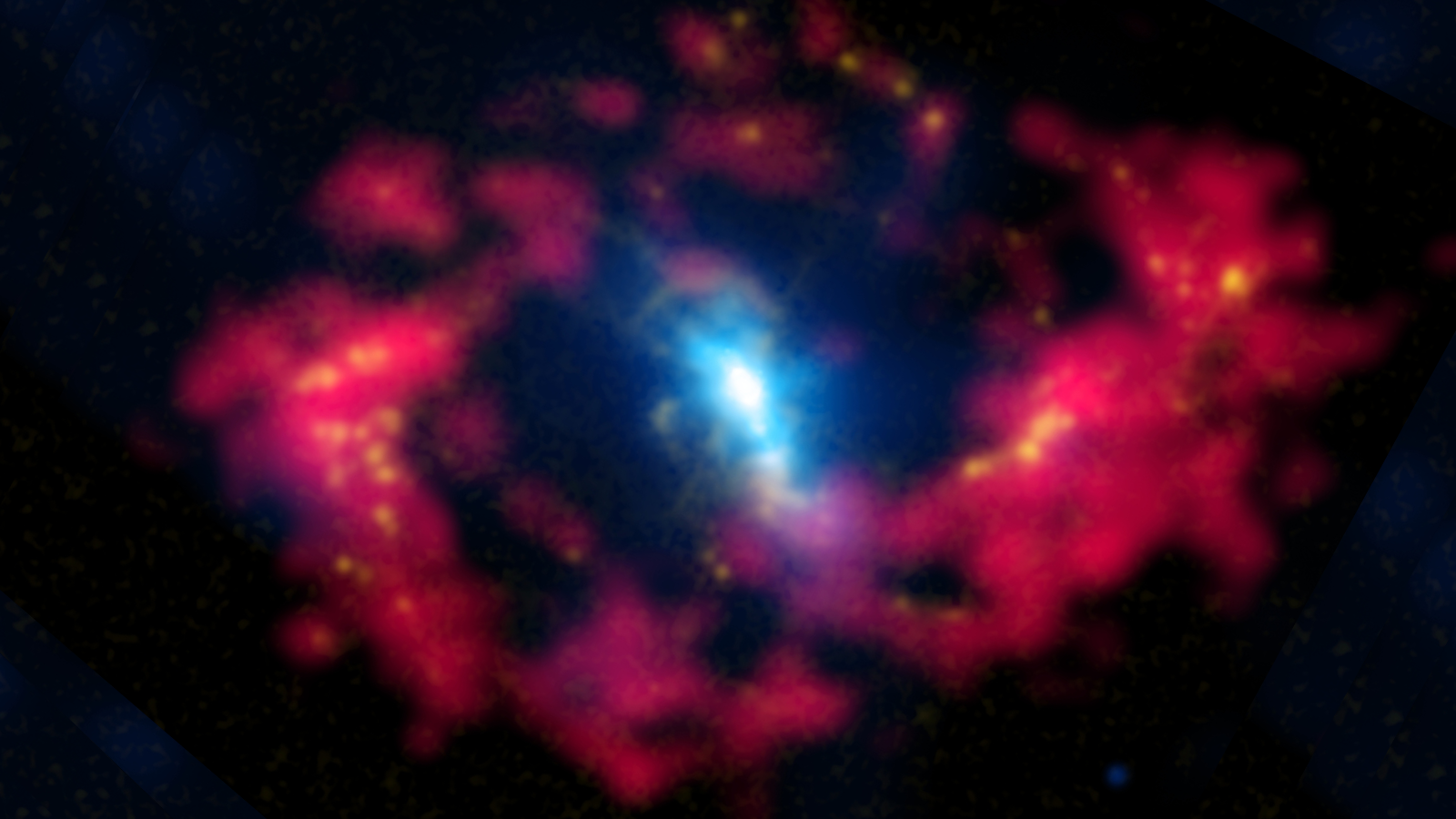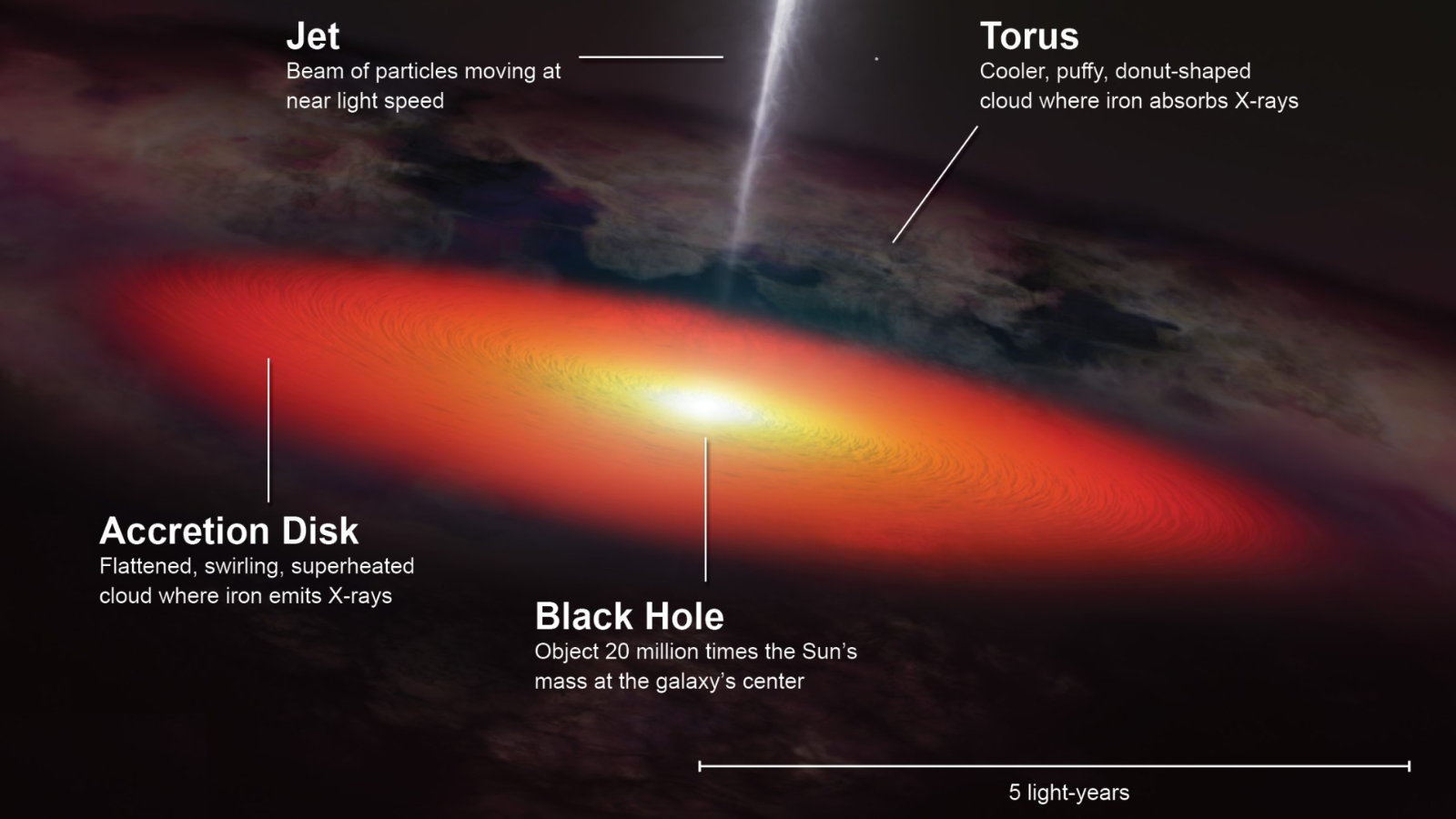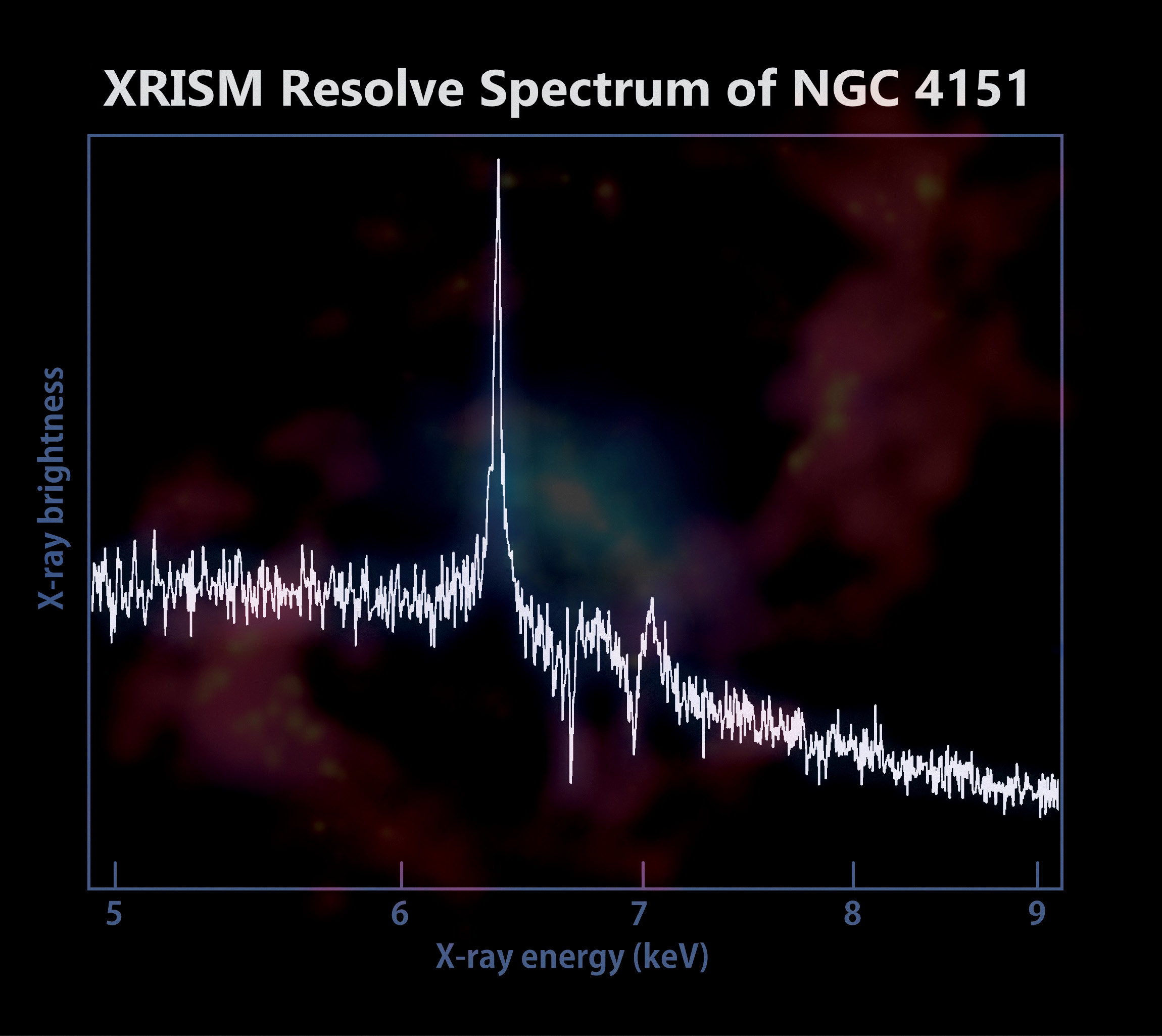Scientists use XRISM spacecraft to predict fate of matter around monster supermassive black hole
"The peaks and dips are like chemical fingerprints that can tell us what elements are present and reveal clues about the fate of matter as it nears the black hole."

Black hole week is in full swing at this point, and to celebrate, NASA has released stunning observations of the heart of a distant spiral galaxy — as well as the monster supermassive black hole that dwells in that heart.
The observations were conducted by the X-ray Imaging and Spectroscopy Mission (XRISM), led by the Japan Aerospace Exploration Agency (JAXA) with contributions from NASA; they show the center of spiral galaxy NGC 4151.
This galaxy, located some 43 million light-years away (as well as its incumbent supermassive black hole, which is estimated to have as much mass as 20 million suns) is seen in vibrant reds and bright blues thanks to the addition of radio waves. That addition comes via data from the Very Large Array (VLA) and the Isaac Newton Group of Telescopes.
Yet, there is more to the XRISM (pronounced "crism") observations than their aesthetic value. The X-ray space telescope was able to distinguish fingerprints of iron in this galaxy's Active Galactic Nucleus (AGN), and that could help determine the fate of matter that swirls around its monster black hole.
"XRISM's Resolve instrument captured a detailed spectrum of the area around the black hole," Brian Williams, NASA's XRISM project scientist at the Goddard Space Flight Center, said in a statement. "The peaks and dips are like chemical fingerprints that can tell us what elements are present and reveal clues about the fate of matter as it nears the black hole."
A supermassive black hole engine
Like all AGNs, the central engine of NGC 4151 shines brightly because it is powered by a supermassive black hole actively feasting on surrounding matter.
Breaking space news, the latest updates on rocket launches, skywatching events and more!
Not all supermassive black holes are so greedy, however. For instance, Sagittarius A* (Sgr A*) at the heart of our galaxy, the Milky Way, has such a sparse diet that if it were a human, it would be sustained by about a single grain of rice every 1 million years.
On the other hand, for an AGN, gas and dust that feed the monster black hole within form a flattened cloud, called an accretion disk, around the black hole itself. The black hole's immense gravity also generates intense tidal forces in this accretion disk, which heats the disk and causes it to glow brightly.
Additionally, matter that doesn't fall into the maw of the monster black hole can get channeled toward the object's poles by powerful magnetic fields that accelerate these particles to near-light speeds, blasting them out as twin jets, one from each pole. This situation is accompanied by a burst of electromagnetic radiation that, when combined with emissions from the accretion disk, often makes an AGN brighter than the combined light of every star in the galaxy around it.
The AGN of NGC 4151 is particularly bright, even for such an active region of a galaxy, and displays a high level of variability. This, combined with the fact that it is at the heart of one of the closest known active galaxies, makes the black hole of NGC 4151 an ideal subject for study.
The AGN has previously been investigated by the Hubble Space Telescope and NASA's Chandra X-ray Observatory, in an attempt to learn more about the interaction between its supermassive black hole and its surroundings. Understanding the dynamics of those two things can reveal how the growth of these cosmic titans impacts the growth of galaxies around them.
XRISM is counting calories
XRISM has a particular advantage over Hubble when it comes to studying the AGN of NGC 4151. This galaxy happens to be uncommonly bright in the particular X-rays XRISM is adept at studying.
Using its Resolve instrument, which studies the universe using just 36 pixels, XRISM was able to reconstruct the spectrum of light coming from the AGN. Because chemical elements and compounds absorb and emit light at characteristic wavelengths, they leave their "fingerprints" in such spectra. Sure enough, in the Resolve spectrum from the heart of NGC 4151, scientists were able to determine the energies associated with this AGN peak just below the characteristic emission line associated with the element iron.
Scientists have theorized that the majority of the power of AGNs manifest through X-rays that originate from regions of hot and flaring matter embedded in the accretion disk close to their central black hole. When these X-rays are reflected off the cooler and denser regions of the same swirling cloud of matter, they're believed to cause iron in those regions to flare — indeed accounting for this discovery.
That means the detection of iron and an X-ray peak around this supermassive black hole paints a clearer picture of the phenomena found in such erupting disks and patches.
The spectrum from the AGN at the heart of NGC 4151 also shows absorption lines that are characteristic of iron in its surroundings. It would appear that iron is absorbing rather than emitting in these regions because they're are cooler than the flaring patches of the accretion disk close to the black hole.
All this radiation is about 2,500 times more energetic than light in the visible region of the electromagnetic spectrum, the only kind of light our eyes have evolved to see.
Though this specific result from XRISM focuses on iron, that is by no means the only element the X-ray telescope is able to distinguish. The satellite can also detect the elements sulfur, calcium, argon and others in AGNs (as well as other celestial bodies) depending on the source.
Each of these elements can tell scientists a different aspect of the stories of the celestial bodies they surround, or even compose. That makes XRISM a vital instrument in the future of astronomy and the effort to decode the X-ray sky.

Robert Lea is a science journalist in the U.K. whose articles have been published in Physics World, New Scientist, Astronomy Magazine, All About Space, Newsweek and ZME Science. He also writes about science communication for Elsevier and the European Journal of Physics. Rob holds a bachelor of science degree in physics and astronomy from the U.K.’s Open University. Follow him on Twitter @sciencef1rst.


